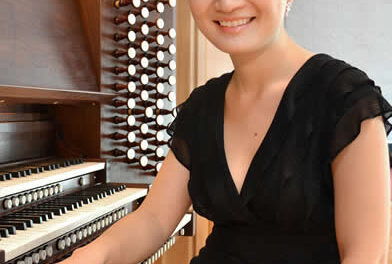 Music for a Great Space began the new year with a virtual concert by the Rolston String Quartet. The ensemble – Luri Lee and Jason Issokson (violins), Hezekiah Leung (viola), and Yoshika Masuda (cello) – “was formed in 2013 during a summer chamber music residency at Banff Centre for Arts and Creativity in Banff, Alberta. The ensemble takes its name from Canadian violinist Thomas Rolston, founder and longtime director of the Banff Centre’s Music and Sound Programs.”
Music for a Great Space began the new year with a virtual concert by the Rolston String Quartet. The ensemble – Luri Lee and Jason Issokson (violins), Hezekiah Leung (viola), and Yoshika Masuda (cello) – “was formed in 2013 during a summer chamber music residency at Banff Centre for Arts and Creativity in Banff, Alberta. The ensemble takes its name from Canadian violinist Thomas Rolston, founder and longtime director of the Banff Centre’s Music and Sound Programs.”
A mature work by Franz Joseph Haydn (Austria, 1732-1809) and the only surviving quartet by Edvard Grieg (Norway, 1843–1907) were on tap. Each is a four-movement composition in the “standard” arrangement of fast-slow-dance-fast.
Haydn’s Quartet in G minor “Rider,” Op. 74, No. 3, was composed in 1793 when he had returned to Vienna after his astoundingly first successful trip (there would be two) to London, 1790-92. He was 60+ years old, the most famous composer in Europe, and at the height of his compositional powers. For the record, the composer did not nickname the quartet “Rider;” the opening idea and the galloping theme in the fourth movement gave rise to the name.
The opening Allegro, which begins with a unison passage played by all four members, quickly gives way to a clear indication of Haydn’s mature style: a liberal distribution of the melodic material between all of the musicians. This, in turn, provides for a variety of textures. And one was immediately caught by the solid presentation of the Rolston players – magnificent intonation, great energy, and close attention to dynamic shading set the stage for a great concert. The waltz-like second theme was treated to a lilting, scintillating presentation.
The slow movement, hymn-like in nature, was tenderly and lovingly played. To be sure, there are some dramatic outbursts, providing contrast. The Minuet is good humored and in a major key, with a minor-mode Trio that darkens the mood a bit.
The flaming finale features some fancy fiddling fireworks, especially for first violinist Lee. The spirited movement closed out 20 minutes of superbly crafted classical music: wit, balance, and unexpected turns that are not tragic.
Grieg wrote three string quartets during his life: an early work, (1860s) that is lost, the G minor (featured on this program, composed in 1877-78), and one left incomplete when the composer died. Grieg wrote this about the G minor: it “is not intended to bring trivialities to market. It strives towards breadth, soaring flight.”
The slow introduction to the first movement, primarily in unison, is stern, even tragic, setting up the serious nature that Grieg mentions above. The melodic material in the introduction also serves as source material for most of the first movement and is heard throughout the work. An agitated Allegro follows, which the Rolston Quartet dug into with great vigor. One can detect some Norwegian folk influence in some of the fiddling. The entire movement is episodic, with slow and fast passages, following one after another.
Cellist Masuda got first crack at the lilting waltz tune of the Romanze. Eventually all four got a turn dancing with the tune. Fast, whirling sections provide contrast. Indeed, the movement features maximum contrast, between the lyric and the dramatic, with an ethereal ending, up in the clouds, close to heaven.
The folk influences heard earlier in the quartet become manifest in the Intermezzo, both in the melodic material, the fiddling style, and the syncopated accompaniments. The main section of the finale is a frenetic dance with more folk influence, but this movement, too, contains many contrasts. This includes a literal reiteration of the opening introduction from the first movement.
This work as well as the Haydn were brilliantly delivered by this marvelous quartet of young musicians. Each member paid close attention to the others, striving for a tight presentation, matching energy and rhythmic character. Ensemble and intonation were impeccable.
A word about the setting of the performance, St. Anne’s Anglican Church in Toronto. The acoustics are first-rate, and the sound recording was superb. The video recording took place the end of September 2020, which we learned from the live Q & A after the performance was complete.











